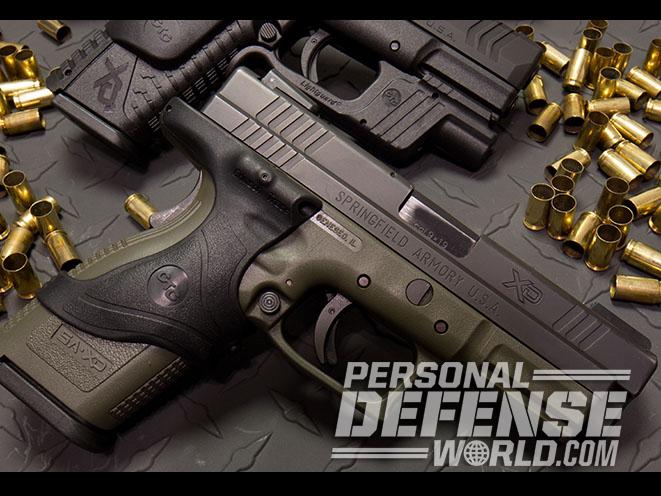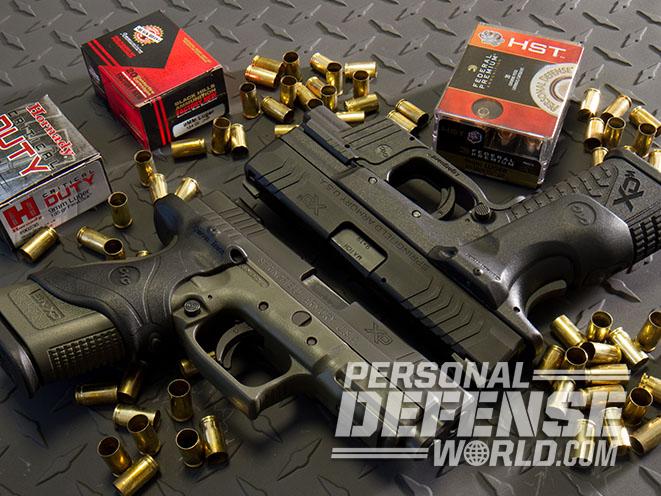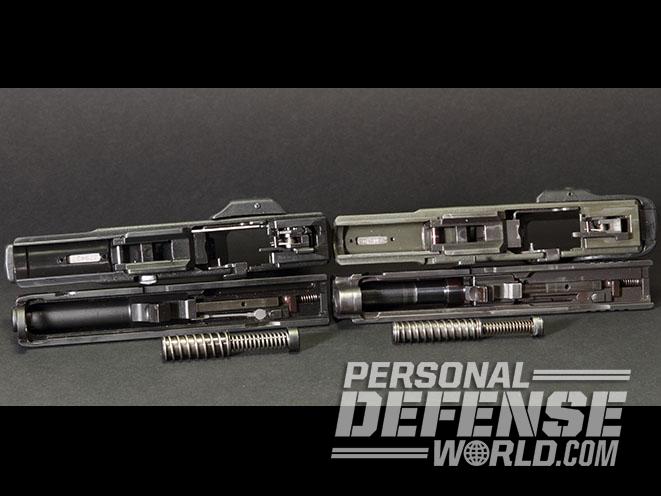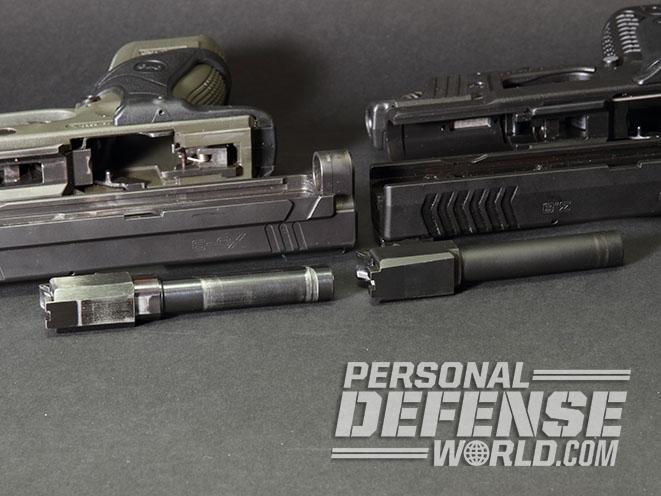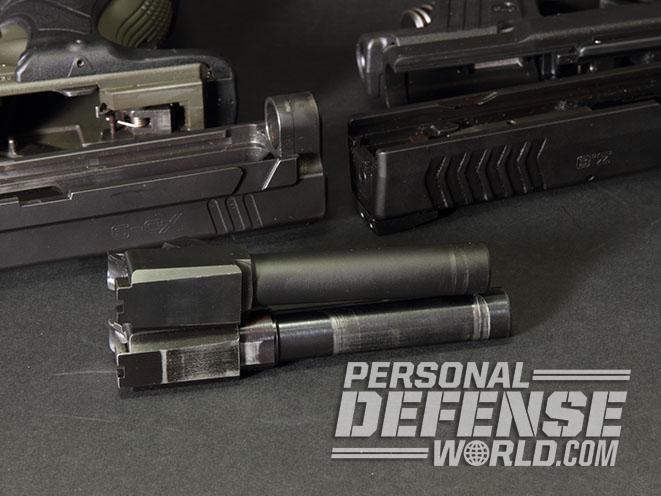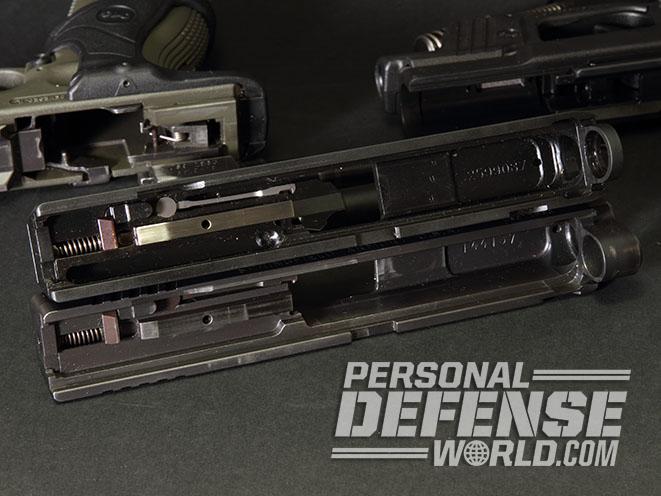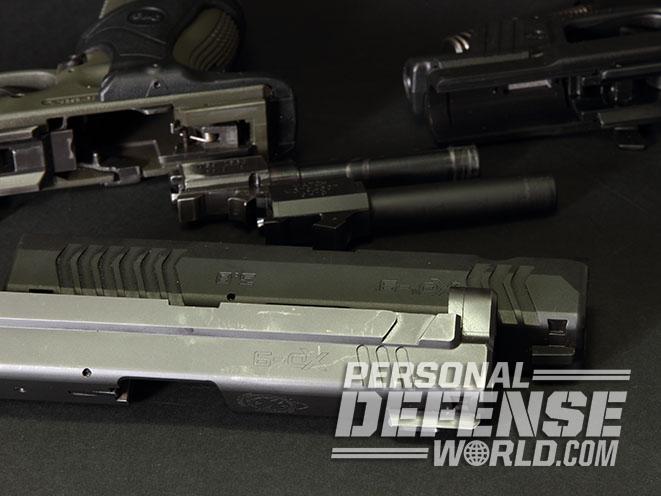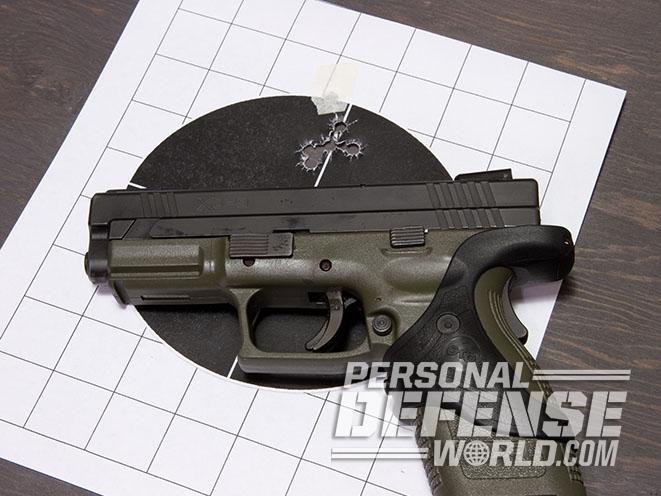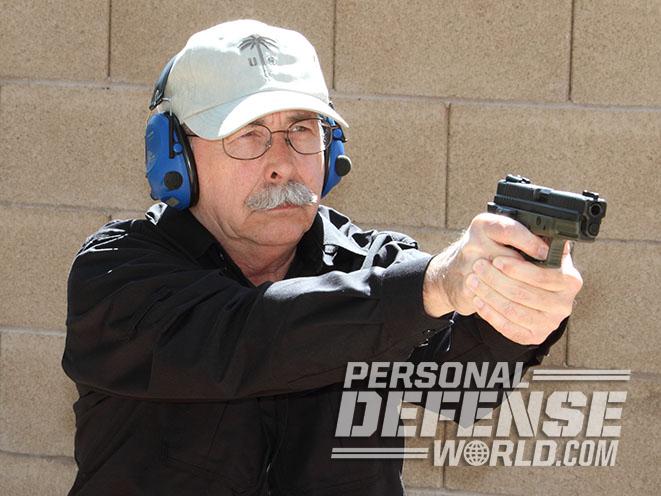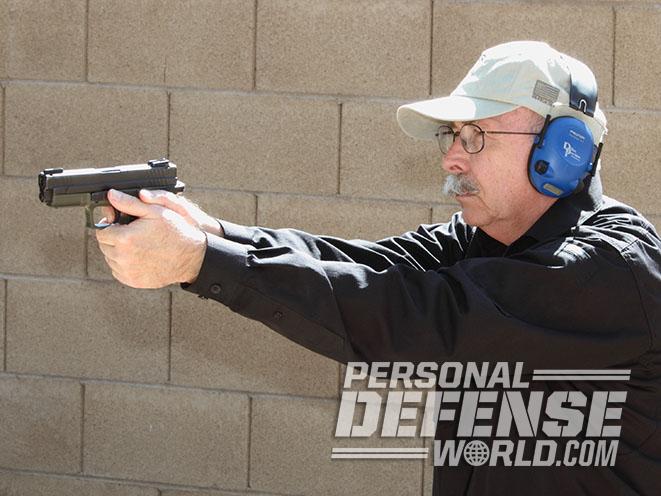The magic number seems to be 10,000 for a handgun endurance test. So, in anticipation of eventually reporting on the performance and reliability of a new Springfield XD 9mm, I’ve kept a running log of all rounds fired, any malfunctions, parts replacements and maintenance procedures (other than routine cleaning) starting when the gun was purchased.
Springfield Armory’s XD 9mm is a polymer-framed, semi-automatic, double-stack 9mm that was introduced early in the 21st century. It was so popular that it spawned the XDM and XD-S series of handguns.
The test Springfield XD 9mm has been used indoors and out, in rain and shine, for informal shooting sessions, training classes and practice. The maintenance performed was routine and was not carried out religiously. The gun took some abuse and probably should have been cleaned more often than it was. Other than lubrication, it has kept going without being cleaned for as long as 500 rounds while using fairly dirty ammunition.
Advertisement — Continue Reading Below

The only modifications were the replacement of the stock iron sights with a set of Truglo Tritium Fiber-Optic (TFO) sights that are excellent because they glow bright green in daylight or dark. They are especially helpful for aging eyes. Additionally, a Crimson Trace Lasergrip was added so that, as a writer, I could gain familiarity with lasers. Other than that, the XD 9mm is a stock gun with no special tuning.
No other parts have been replaced, and that includes springs. That’s fairly remarkable considering that some gun makers stipulate that their handgun recoil springs be replaced at intervals as low as 500 rounds. And it is common to replace a 1911 recoil spring every 2,000 rounds. Dave Williams, an expert gun builder in Springfield’s custom shop, tells me that the XD recoil spring assembly should last for at least 20,000 rounds and that the extractor will probably be the last part to fail. He reports that in testing XDs have had 30,000 to 40,000 rounds put through them without extractors losing tension.
Springfield XD Over The Years
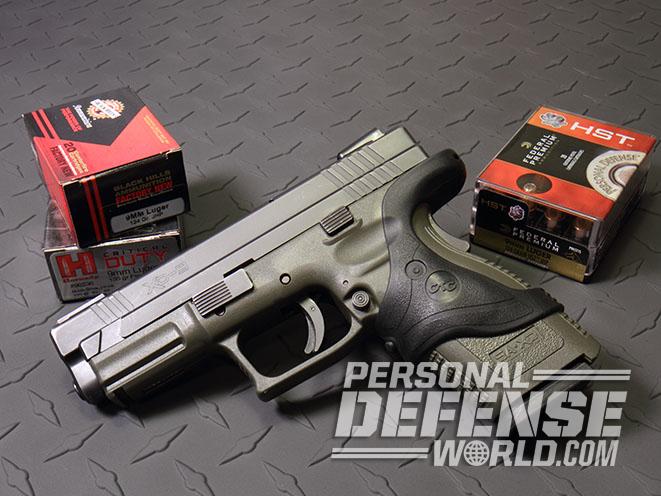
Advertisement — Continue Reading Below
For the most part, I’ve fired inexpensive range ammunition through the Springfield XD. The first 200 rounds were fired on December 19, 2004. There were no malfunctions other than a few failures to cycle when testing ultra-light handloads until December 23, 2007, at about round 5,760, when two rounds failed to extract. That’s a remarkably long time to go without a single problem.
During the next range session, when an additional 100 rounds were fired, another failure to extract occurred. A failure to extract is when the spent cartridge case remains in the chamber instead of being withdrawn by the extractor to be thrown clear of the gun. Suspecting an ammunition problem, I changed to a different lot number of the same ammo. That seemed to cure the problem for another 641 rounds until there were two more failures to extract.
So, I cleaned the Springfield XD 9mm, paying special attention to the chamber. Afterward, the gun ran fine for about 400 rounds, when another failure to extract happened at about round 6,901. After another failure to extract at about 7,066 rounds, I aggressively cleaned the chamber using a very fine-grit polishing cloth to remove any brass that had adhered to the walls.
Advertisement — Continue Reading Below
That cured the problem, and the XD ran without incident for about 1,271 more rounds until three failures to extract occurred in the next 380 rounds. At that point, the gun had cycled 8,717 rounds. Not being totally obtuse, I guessed it might be time to scrub the chamber again.
Old Vs. New

The problem has disappeared now for 1,336 rounds. That’s a total of 10,053 rounds with only 11 malfunctions, all failures to extract. And the first one didn’t occur until over 5,000 rounds had been fired! A little math reveals a failure rate of 0.00109 percent, or about one in 1,000, and it appears that all malfunctions could have been avoided with better chamber cleaning every 1,000 rounds.
How accurate is the used Springfield XD compared to a new one? I acquired an XDM 9mm that is arguably an improved XD with interchangeable backstraps, a higher capacity and a match-grade barrel. To test the gun—not my eyes—I added a Crimson Trace Lasergrip to the XDM as well as a Crimson Trace Lightguard for good measure.
Advertisement — Continue Reading Below
Testing off a benchrest at 15 yards using the lasers and Black Hills’ 124-grain JHP ammunition, the new pistol’s best five-shot group was 0.67 inches, compared to 0.79 inches for the older XD 9mm. A 0.12-inch difference doesn’t count for much, so the XD is still as accurate as a new gun, and the trigger has gotten better from all the use.
I don’t think there is any question about the quality and reliability of the standard Springfield XD. It’s a remarkable gun.
For more information, visit springfield-armory.com.
Advertisement — Continue Reading Below
This article was originally published in “Combat Handguns” July/August 2017. To order a copy, visit outdoorgroupstore.com.

